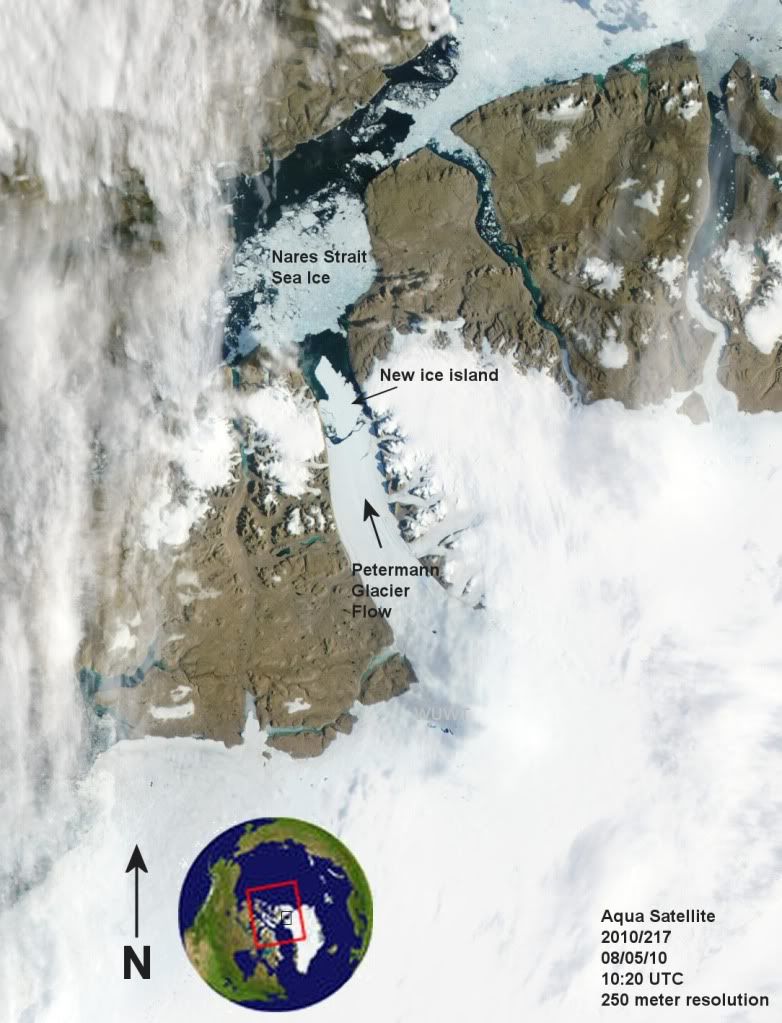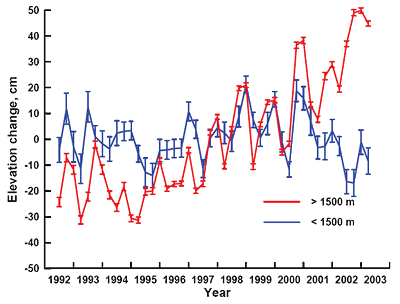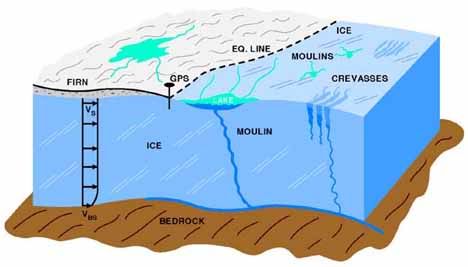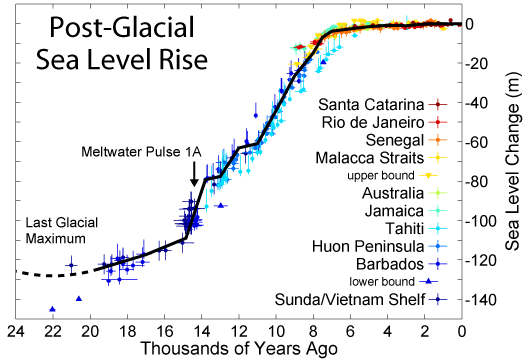Part 1 Part 2
In part 2 I rebut some of the claims to an atmospheric greenhouse effect using the concepts introduced in the first part.
Given the Earth's distance from the Sun and the Sun's electromagnetic radiation (EMR) Earth should by conventional calculations be about -18C temperature on average. However Earth's surface temperature is 15C on average -- a difference of 33C. Many have resorted to the notion of a greenhouse effect to explain this difference.
To the various greenhouse claims I have heard:
1. It is a one way valve for EMR.
2. Back radiation will add energy.
3. It reflects energy like a mirror.
4. It reduces the emissivity of Earth.
5. It slows the EMR flux.
6. It is a greenhouse blanket.
7. CO2 is an absorber of infrared energy therefore it must add energy.
8. The air above is cooler therefore capable of absorbing energy from the ground and this adds heat.
9. It shallows the environmental lapse rate (vertical temperature gradient) and therefore slows convection.
I now address each of these points in turn:
1. It is a one way valve for EMR.
Rebuttal:
- A one way valve for heat requires work. A passive blanket such as the atmosphere does not have its own work.
- It depends on the relative temperature and the atmosphere happens to be colder than the ground. Heat only flows from hot to cold despite the presence of back radiation.
figure 1
Contrary to the above depiction Earth's atmosphere is a "passive blanket". A passive blanket can only slow fluctuations of temperature such as how the Earth stays warmer at night and cooler during the day than the Moon with its lack of atmosphere.
Earth has better surface temperature regulation than the Moon due to the heat capacity of its atmosphere; the ability to reflect more sunlight back into space; and how the fluids of the air and oceans redistribute heat. For the greenhouse effect to work it would require Earth's atmosphere to be an active blanket; that is, a powered one.
If the air were to get warmer than the ground, heat could flow from the air to the ground. Yet the air can't get warmer than the ground because the energy to warm the air came from the ground in the first place.
The heat lost from any object can't warm something else up more than itself. And heat can't turn around back on itself and heat itself up again. Work would have to be performed for such a thing to happen and greenhouse gases have no energy source of their own.
That the air is colder than the ground is shown in the vertical temperature gradient or environmental lapse. Moving up in altitude the air temperature cools by an average of 6.5 degrees celsius per kilometre1.
It's an Achilles heel for greenhouse theorists. The air can only be gaining heat from the ground if it is colder than it. Meanwhile the air can only heat the ground below if it gets warmer than it. The air can't be both hotter and colder at the same time. Hence: no heat pump or one way valve effect.
This convention of heat flow is represented in the following diagram:
Figure 2
Object A has the highest temperature. B has the second highest. C has the third highest. D is the coolest -- an infinite heat sink maintained at absolute zero. Despite A and C receiving the same amount of EMR from B only C is heated by B. A is not heated by B.
For the greenhouse effect to be real C could heat B and B could heat A. Contrary to this contention heat only flows in the direction of the black arrows2.
In figure 2 above, B is not heated by C despite its back radiation. And A is not heated by B despite its back radiation.
EMR may convey heat or not depending on the relative temperatures of the objects involved. It is better to view EMR as an information signal to the Universe which may or may not convey heat depending on the situation in which it is received as well as sent.
Mutual EMR is really about equalising temperature differences throughout the Universe. It is not about raising the overall temperature from nothing.
In radiative transfer the range of EMR frequencies emitted from a colder object will not be able to on the whole stimulate a warmer object to become warmer still.
And so in the case of the Earth the air won't heat the ground because the atmosphere is colder than it.
2. Back radiation will add energy.
Rebuttal:
Every object emits and absorbs EMR at all frequencies to some extent and the amount mutually exchanged cancels. Everything is bathed in a sea of EMR even on the inside of objects. Yet this mutual exchange neither adds to nor subtracts from the total energy.
- All objects emit and receive mutual EMR. These mutually exchanged vectors cancel. They do not add.
There's a popular post on Dr Roy Spencer's website from 6 August 2010 called help back radiation has invaded my backyard.
Figure 3
Does back radiation warm you up like a ray gun? It depends on the relative temperature.
Does back radiation warm you up like a ray gun? It depends on the relative temperature.
The fact of the matter is back-EMR is not indicative of any greenhouse effect nor of heat trapping of EMR. It's better to view the back radiation from the sky as merely a measure of its temperature.
The infrared that's emitted by the night sky back to the ground says nothing of how the energy arrived there whether as a result of convection; evaporation and re-condensation of water; or by EMR absorption.
3. It reflects energy like a mirror.
Rebuttal:
Imagine a hollow sphere that has EMR emitting on the inside and out (figure 4a).
- At equilibrium the internal reflection or emission of EMR makes no difference to the temperature of an object.
Figure 4a
Cross section through hollow sphere emitting EMR.
Cross section through hollow sphere emitting EMR.
Let us split this sphere in half to consider the effect of one side upon the other (figure 4b).
Figure 4b
Let the left hemisphere emit to the right hemisphere 50% of its EMR -- 25% of the whole. Now the right side absorbs this and re-emits 12.5% of the whole back to the right hemisphere as per greenhouse theory. In such a way energy is added to itself and counted again.
This impossibility is resolved by assuming that the internal flux of EMR in an object is cancelling. The same is true for the upper layers of atmosphere radiating on to the lower levels and the surface of the Earth.
Were this argument not to be true the law of conservation of energy3 would be wrong and you could get energy for free from nothing from such things as mutual radiation.
The only thing that can make a difference to the temperature of an object involving the exchange of EMR is to change the emissivity.
An example of this is an emergency silver foil blanket where it's low emissivity warms up the inside. CO2 has a high emissivity. So it's not like a foil emergency blanket. CO2 will help the heat loss of the Earth through its high emissivity.
In a Princeton University atmosphere lecture note (page 8/12 here) it says that at some frequencies of infrared clouds and the atmosphere act like a mirror.
If it's reflecting, rather than absorbing and re-emitting EMR, this reflection is an elastic collision and no energy is absorbed by the "mirrors", which in this case are the clouds and the air.
If this form of back radiation could add to the overall temperature the following impossible energy multiplication could occur:
Figure 5
(via Hockey Schtick)
4. It reduces the emissivity of Earth.
Rebuttal:
- Just as CO2 is a good absorber it is also a good emitter. CO2 increases Earth's emissivity.
The only way to get increased temperature without the application of work is to have a lowered emissivity. Being a good absorber of EMR CO2 is equally good an emitter as per Kirchhoff's law4. This increases Earth's emissivity.
- The process of absorption and emission merely moves the emission point from the warmer surface to the cooler upper atmosphere.
Over 99% of the CO2 absorption of infrared light occurs within about 10 metres of the ground. For example infrared absorption by CO2 at wavenumber 2349 is 99% at 70 centimetres above the surface5. This will heat the air a little bit if it's cooler (like depicted in figure 15a below) or not at all if the air is at the same temperature.
Then there is the phenomenon of line broadening of the CO2 absorption -- the so-called wings on the initial absorption line. It's a widening into a trough or valley in the red graphs of figure 6 from what's usually a thinner line (like this) for CO2 absorption.
The broadening occurs through such things as Doppler broadening and it seems to reduce the emissivity of Earth (figure 6).
Figure 6
Four modtran emission temperatures looking down from heights 1, 8, 18 and 80km including absorption of CO2 and other gases. Red graph is the apparent atmospheric emission temperature at differing wavelengths.
Humidity = 0. CO2 = 375ppm.
You can compare the emission temperature to the air temperature in this green graph generated at the same modtran simulator:
Figure 7
The reader may question: if EMR is the only way for Earth to lose heat the fact that Earth emits less must mean that it warms up. I intend to address this controversy in a follow-up post. Suffice it to say that there's more to the question of what the Earth's average temperature really is. Plus there could be other ways energy can be lost or gained in the atmosphere not involving a greenhouse effect.Temperature graph in green.
If adding a high emissivity agent such as CO2 could block the transmission of heat-energy in the form of EMR then the application of a high emissivity coating to an object would be a useless way to enhance an object's energy dissipation because it would block energy from getting to the surface due to the high absorptivity that comes with high emissivity thus cancelling itself out.
High emissivity coatings are used in rockets. It lowers the temperature of the combustion chamber because, while the high emissivity coating does not significantly stop heat conduction within the rocket liner wall where physical heat conduction dominates, it does assist EMR to leave the object.
So too it is for the atmosphere. CO2 assists the emission of EMR into space. If there was any credibility for an atmospheric greenhouse effect at all there would be a hot spot in the air that's just not there (as publicised by Jo Nova).
5. It slows the EMR flux.
Rebuttal:
- Yes but irrelevant in light of the huge amount of heat conveyed by evaporation and convection.
- As long as the up going EMR is lower than the down going there is no addition of heat to the ground.
"Slows the EMR flux" means that the difference between the up going and the down going EMR is lessened. When you sum the up going and the down going the total EMR emitted through the troposphere is lower so the Earth gets warmer. That's the idea at least.
- The Earth emits as much EMR as it receives from the Sun so there is no imbalance.
However, even though through the process of absorption and re-emission EMR does bend around corners and goes back down to Earth the energy isn't being multiplied. It can't be counted again.
All molecules of the atmosphere absorb and emit EMR at every wavelength to a certain extent. There is only a slight difference between the magnitude of EMR in the vertical direction -- the downward being slightly less than the upward.
The heat budget diagrams of Prof Kevin Trenberth of the IPCC and Gavin Schmidt of NASA multiply the upward radiation after it is absorbed and re-emitted by the atmosphere by a factor of two (based on this diagram from here).
figure 8
Kiehl and Trenberth heat budget 19976.
There is something very wrong with the above diagram (many things actually). Shouldn't there be an equal amount of EMR radiated up and down from the sky layer?
In figure 9 the EMR down is 324 W/m2 while the EMR up is 165 + 30 = 195. How can there be such a discrepancy? Is this IPCC voodoo magic?
figure 9
My adjusted version with opposing vectors of EMR cancelled. (NASA has a similar version here.)
And once that infrared EMR is absorbed in the first few metres above the ground it's done all the heating it will do and it creates barely a blip on the vertical temperature gradient (see figure 15a below).
The greenhouse effect says that EMR energy is trapped (figure 10a).
Figure 10a
This is incorrect. The Earth actually emits as much EMR as it receives from the Sun7.
Figure 10b
6. It is a greenhouse blanket.
Rebuttal:
The gas of the atmosphere acts nothing like a human blanket nor the glass roof of a greenhouse. In both the latter cases the mechanism of warming is reduced heat loss due to the blocking of convection.
- Blankets and greenhouse roofs work by blocking convection. This does not exist in an unrestrained gaseous atmosphere.
Figure 11
The fibres of a blanket blocking convection of air particles.
If you put on too many winter clothes you will experience overheating due to lack of convection. The human body feels comfortable at air temperatures a few degrees lower than body temperature.
The body prefers to lose a certain amount of the heat generated internally. If the air temperature goes above this comfort zone the body will sweat to utilise that powerful mover of energy the latent heat of evaporation of water.
The human experience of a blanket is projected onto the atmosphere to visualise a greenhouse effect. But absorption and re-emission of EMR is not a slower nor a blocker of heat energy.
There's so much heat conduction from convection in the atmosphere that if you get rid of the air immediately above the ground (say 10 metres) the temp will go up to about 70C (based on beer bottle experiment of first part). If you get rid of the atmosphere altogether, with its reflective power, it will become about 107C like the Moon.
Let us consider three main modes of heat transport from the surface to the upper troposphere:
figure 12
Object A represents the Earth. Let there be three main modes of heat loss from the surface: convection, water evaporation and EMR.
Considering the power of water evaporation and convection to pick up the slack, a few degrees C is not going to make much difference in the scheme things such as the vertical temperature gradient. EMR is not the independent factor greenhouse theorists consider it to be.
Absorption of infrared by CO2 can delay or slow the outgoing heat for a time by converting the faster escaping infrared light into slower moving convection. But it can't create extra warmth. It cannot displace the ground temperature to a hotter point as depicted in diagram 15b below.
7. CO2 is a good absorber of infrared energy therefore it must add energy.
Rebuttal:
Yes, an object absorbing EMR will warm if the radiating object is warmer than it. The temperature in the sky will be changed. But that doesn't mean that it heats us more than we originally were down here on the surface of the Earth. That's not if you wish to believe in the laws of thermodynamics anyway.
- Yes absorption can make an object warmer. But it doesn't then turn the energy around and make the warming object (in this case the surface) warmer than it originally was.
Once EMR leaves the ground and moves upward it is immaterial to the ground temperature whether it is subsequently absorbed on the way out or not. The magnitude of the heat flow in EMR is irrelevant to the question of the emanating object's starting temperature as long as the direction of heat points away.
Once it warms the air to the higher temperature (close to the ground) its work is done. You don't keep counting every emission and re-absorption from a greenhouse gas molecule.
8. The air above is cooler, therefore capable of absorbing energy from the ground and this adds heat.
Rebuttal:
This version comes from climate sceptic Lubos Motl. I base this contention on a comment he made -- I think it was on comment is free (The Guardian) -- where he said the greenhouse effect exists because the air is cooler than the ground. I think the reasoning is along the lines of the following sort of observation (figure 13).
Figure 13
It's basically a variation on point 7. The idea is that the atmosphere is a cooler than the ground just like that gas cloud is and therefore absorbs some heat. This is true.
But in the above diagram putting the cloud there doesn't make the emanating object warmer than it was.
9. It shallows the environmental lapse rate and therefore slows convection.
Rebuttal:
The flow of heat is the result of the difference in temperature from one place to another. It's an effect not a cause. Heat doesn't back up like cars on a freeway going slower with the cars in front effectively slowing the cars behind.
- Gradients are a result of temperature difference not a cause.
Heat flows as fast or as slow as the temperature difference requires regardless of any so-called EMR blocking.
If anything CO2 will deepen the vertical temperature gradient due to it displacing a lot more weight in the vertical direction when it rises and hence loses more temperature than main constituents O2 and N2. (This paragraph was edited 10 April 2011).
In the warmth of the day the vertical mixing of the air just goes higher or increases the gradient (figure 14). The diurnal variations in convection have gradients that tend to meet at a point about 2 km off the ground to where the vertical temperature gradient resumes at a constant gradient and magnitude around the clock.

Figure 14
It is this vertical temperature gradient which dominates over the flow of EMR and which therefore renders any greenhouse effect by absorption meaningless.
Figure 15
Horizontal axis is temperature in kelvin. Vertical axis is altitude. Blue line represents air temperature without greenhouse effect. Red line is with greenhouse effect.
The above figure 15a depicts the greenhouse warming I would expect. Note that in my graph 15a the temperatures meet at the ground. In greenhouse theory the air temperature moves the ground temperature to the right.
Since the ground is the source of the heat diagram 15b is against the laws of physics. Even the deviation in my depiction in figure 15a above is an exaggeration to the true effect that the greenhouse absorption has. Being only 390ppm CO2's heating effect is negligible.
At the end of the day any human-made heating whether it be CO2 absorption; or a building; or an asphalt car park even if it's like 2 - 3 C will be nothing in the scheme of things such as the vertical temperature gradient; the dissipation of heat at night; convection; and so on.
References:
1. Environmental lapse rate.
2. The second law of thermodynamics.
3. Conservation of energy.
4. Kirchhoff's Law.
5. Calculation at 2349 wave number per centimetre using an absorbance calculator. Assumes no scattering. Absorption coefficient is 1214. Atmospheric molarity 0.000023 mol per litre.
6. Kiehl and Trenberth, 1997: Earth's Annual Global Mean Energy Budget, Bull. Am. Met. Soc. 78, 197-208. Here and here. Pic only here. (Updated 2008 diagram here.)
7. NASA measurements of EMR flux.
8. Encyclopedia of the Solar System, Second Edition (McFadden, Weissman, Johnson, 2006).
Further Reading:
WattsUpWithThat guest posts by Tom Vonk 1,2.























































